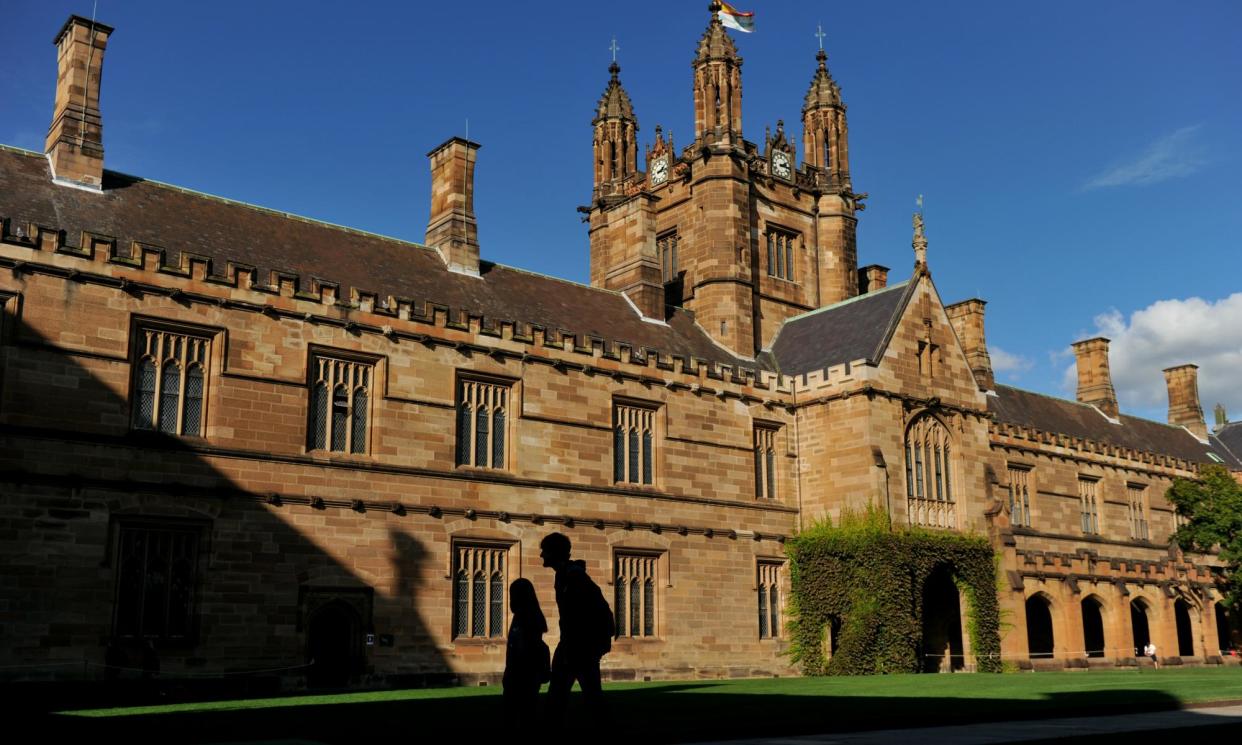Albanese government announces plan to cap international student enrolments at 270,000

Elite universities have warned they remain “implacably opposed” to international student caps as the federal government announced it plans to limit new enrolments next year to 270,000.
Despite Labor’s decision to dump a controversial ministerial direction giving priority to students applying to low-risk institutions, the Group of Eight said the policy had already “significantly damaged the global reputation of Australia’s international education sector”, and stated a cap will “compound this damage”.
In a statement on Tuesday the education minister, Jason Clare, revealed the details of the proposed national planning level, which would set total university enrolments at 145,000 – near 2023 levels.
It means some universities will grow their enrolments while others will be pared back.
The policy rules out introducing a cap on international students as a proportion of enrolments, instead targeting cuts mainly at prestigious metropolitan universities and the vocational education sector – the latter of which Clare said must be purged of “shonks”.
Related: Australian universities accused of awarding degrees to students with no grasp of ‘basic’ English
A “low-risk institution” is a government term for a university or education provider whose students are considered likely to be enrolling as genuine students rather than using a student visa to enter Australia for other non-study reasons.
Under the reforms, private universities and non-university higher education providers will be able to enrol 30,000 new international students in 2025; while vocational education and training providers will be limited to 95,000.
As of August 2021, about 1.2 million people were attending university or other higher education whereas half that – 601,901 – were attending vocational education (including TAFE and private training providers), according to the Australian Bureau of Statistics.
Clare told reporters in Sydney there are about “50% more” international students in private vocational and training providers today than before the pandemic, while universities had about 10% more.
Clare said the plan – subject to a bill still before parliament – would result in universities having 15% more international student enrolments than before the pandemic while “private vocational providers will be about 20% less”.
The reforms – along with shutting down 150 “ghost” colleges – aimed to crack down on those “seeking to exploit this industry to make a quick buck” by “not really operating to provide an education for international students but really are a backdoor for people to work here”, he said.
Clare said ministerial direction 107, a regulation enacted in December 2023 that gave priority to students applying to low-risk institutions, had proven a “pretty blunt instrument”.
“It has meant a few universities have got a lot more international students this year than they did last year,” he said.
While “a lot of universities have got a lot less”, Clare said Newcastle, Wollongong, Griffith, Charles Darwin and La Trobe universities were “bearing the brunt of this”.
Labor has been heavily criticised by the tertiary education sector for pursuing a plan to cap international students to counter political attacks about the level of arrivals and net migration, in the absence of evidence that students are exacerbating housing shortages.
Universities pointed to evidence from Treasury that existing measures to lower enrolments had already achieved the desired reduction.
In July, Labor more than doubled the visa application fee for international students, in a further effort to cut net immigration from 528,000 in 2022-2023 to 260,000 by 2024-25.
The Group of Eight chief executive, Vicki Thomson, said the “unexplained” target of 270,000 gave the sector no comfort. “This policy was bad yesterday and it is bad today.”
Thomson said the policy would “punish the universities that have proven to be the most popular for the very best global students”.
“Caps will not undo the damage of ministerial direction 107 as international students simply will not study where the Australian government tells them to.”
The Greens education spokesperson, Mehreen Faruqi, accused Labor of “charging ahead with this terrible policy” despite “near unanimous opposition from the higher education sector”.
Faruqi said it was “disgraceful” Labor had put “international students in the firing line” in response to Coalition “fear-mongering” about immigration.
Prof David Lloyd, chair of Universities Australia, said the policy “will apply a handbrake to Australia’s second biggest export industry”.
“Even without legislated powers to limit international student numbers, the government has already taken a sledgehammer to the international education sector,” he said.
“We note the government’s acknowledgment of the harm done by this destructive instrument [ministerial direction 107] and again call for its immediate removal to deliver growth in the sector, as the minister has promised.”
The Independent Tertiary Education Council of Australia’s chief executive, Troy Williams, said the “sector-wide limits need to be accompanied by immediate and precise information” to providers “about what it means for them”.
Related: Labor hikes international student visa fees as sector warns of ‘death by 1,000 cuts’
Earlier in August, Universities Australia told a Senate inquiry the number of student visas being granted had dropped by 23% – or almost 60,000 students – over the past year. It warned a further reduction of that size could result in up to 14,000 job cuts.
In response to the cap, the National Tertiary Education Union called on the government to ensure that “university bosses don’t use these changes as an excuse to cut jobs from an already stretched workforce”.
The NTEU national president, Alison Barnes, argued “some of the numbers thrown around by university leaders in recent months were simply part of an unfair scare”.
A University of Sydney spokesperson said it would “carefully work through the detail to assess the likely impact” but promised to work “collaboratively with governments and the sector on managed growth of international higher education, one of Australia’s most valuable exports”.


